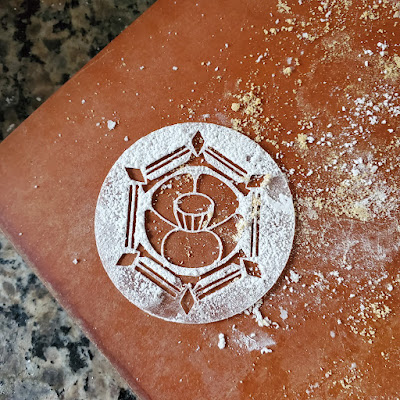I have been making bûche for a few years now. This year's flavour is Mont Blanc probably because I was sorely disappointed that I could not find a Mont Blanc cake when I was in Chamonix, France to see Mont Blanc the mountain.
Let's get right into to how make.
Adapted from Ladurée Sucre
- 2 egg whites
- 30 g extra fine sugar
- lemon juice
- 2 callets of Valrhona Ivoire white chocolate
1. This is a "make-ahead". Whip egg whites until frothy, add a splash of lemon juice.
2. Continue to whip until medium peaks, slowly stream in sugar.
3. Whip until stiff peaks and glossy
4. Pipe dollops (mushrooms, stems, snowman, etc.) and logs onto an ungreased parchment sheet
5. Bake at 175F (or lower if possible) for 3 hours
9. Store in loosely covered container
- 1 cup (100g) fresh cranberries and/or other berries (do not use frozen)
- 4–5 rosemary sprigs
- 3/4 cup (180ml) water
- 1 and 1/4 cups (250g) granulated sugar, divided
2. In a medium saucepan set over medium heat, bring the water and 3/4 cup (150g) of sugar to a simmer
3. Remove the pan from heat and allow to cool for 5 minutes.
4. Pour the sugar syrup over the cranberries and rosemary and stir.
5. Cover the bowl and set aside for 15 minutes.
6. Line a baking sheet with parchment paper or a silicone baking mat.
7. Using chopsticks or slotted spoon, transfer the cranberries and rosemary from the sugar syrup and place them on the prepared baking sheet.
8. Allow to dry, uncovered, for 1 hour.
9. Pour remaining 1/2 cup (100g) sugar into a large bowl.
10. Toss the cranberries and rosemary in the sugar, coating them all the way around.
12. Cover tightly and store in the refrigerator for up to 3 days.
- 750 mL (3 cups) of heavy cream
- 75 g of sugar
- 3 teaspoons of gelatin
- 3 tablespoons of cold water
- 1/3 of stabilized whipped cream from previous
- 240 g of sweetened chestnut paste
- 2 teaspoons of rum
- 439 grams unsweetened chestnut puree, canned, preferably French
- 439 grams chestnut paste, buy it or make your own
- 454 grams unsalted butter, softened
- 4 tsp vanilla extract
- 4 Tbs dark rum
- 165 g of chestnut cream
- 15 g of stabilized whipped cream
- 1 and 1/3 cups (157g) cake flour
- 2 Tablespoons (10g) unsweetened natural or dutch-process cocoa powder
- 1 teaspoon baking powder
- 1/2 teaspoon salt
- 6 large eggs, separated and at room temperature
- 1 cup (200g) granulated sugar, divided
- 2 Tablespoons (30ml) vegetable oil, canola oil, or melted coconut oil
- 1 and 1/2 teaspoons pure vanilla extract


































